M
Leave a Legacy
of Giving
You can support our mission of changing lives by saving sight in multiple ways!

Kansas City, Mo., September 2019 – Saving Sight is proud to offer Halo sterile tissues as another simple and convenient solution for our clinical partners. Halo sterile tissue allografts are currently used by ophthalmic surgeons worldwide as a glaucoma shunt cover, or for cornea surgeries like Keratoplasty, ALKP, DALK, and Boston Keratoprosthesis. The halo cornea is sterile and, as such, has no viable endothelial cells. In addition to the Halo sterile cornea, Saving Sight also offers Halo sterile sclera and sterile pericadium. Both are best suited for surgical use in glaucoma shunt coverage. This allows Saving Sight to provide another service to both cornea surgeons and those who specialize in glaucoma, in addition to continuing our work in recovering, processing and distributing donor tissue for corneal transplantation.
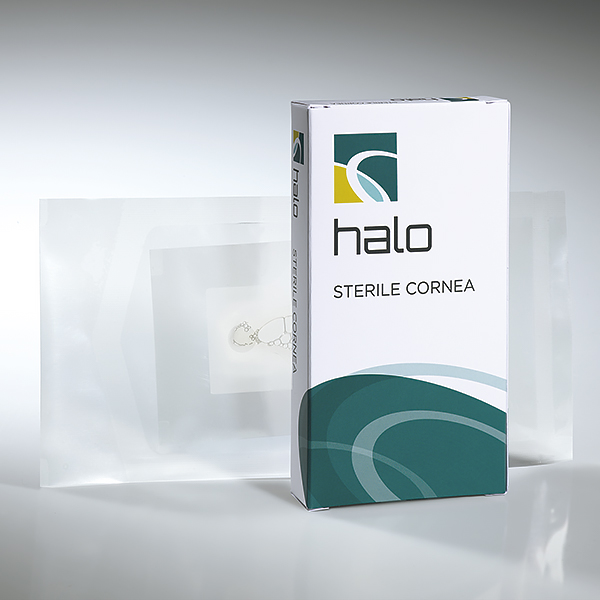
Benefits of Halo Sterile Tissues
Convenience: Tissues feature patented easy-peel packaging for fast and safe introduction to the surgical field.
Clarity: Halo Sterile Cornea is clear and will remain clear, resulting in simplified post-op assessment and improved patient cosmesis.
Shelf Stable: Tissues remain at room temperature and never need reconstitution, so physicians can always have it available in their facility.
Sterility: Halo achieves industry standard sterility by using E-beam Sterilization. The reduced processing time limits environmental exposures.
In addition to offering halo sterile tissues, Saving Sight also offers whole sclera. Please contact our Client Services Team if you have any questions. Learn more at https://saving-sight.org/halo/.
About Saving Sight
Saving Sight is a nonprofit eye bank with a mission to change lives by saving sight. Founded in 1960, Saving Sight has grown to become one of the nation’s leading eye banks and is focused on providing innovative solutions to its clinical and research partners. Saving Sight welcomes customized research collaborations that meet your research tissue needs and strives to advance the field of corneal transplantation through dynamic collaborations with medical centers and researchers. Headquartered in Kansas City, Mo., Saving Sight facilitates eye donation in Missouri, Kansas, and Illinois, serving transplantation and research specialists locally and around the world.
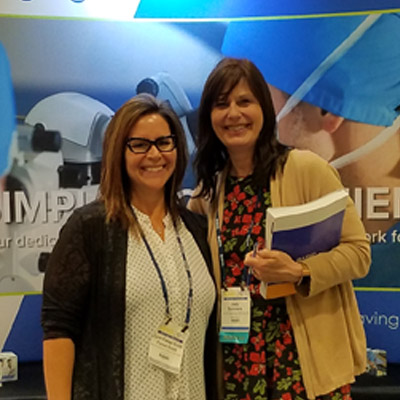
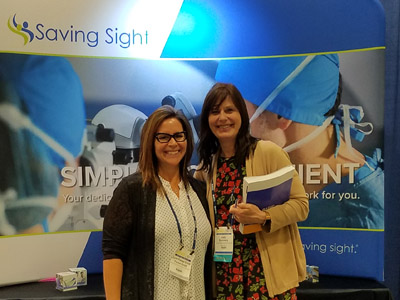
Lynn Forest-Smith, Director of Business Development at Saving Sight, with Dr. Jody Summers at ARVO 2019 in Vancouver.
Kansas City, Mo., August 21, 2019 – Jody Summers, PhD, professor of cell biology at the University of Oklahoma Health Sciences Center, studies the extracellular matrix of the sclera and changes associated with myopia development. Myopia is largely regulated by the visual environment. Through her studies, she hopes to understand why myopia interacts the way it does so intervention is possible.
“Nearly 50 percent of the world’s population will be myopic by 2050,” says Dr. Summers. “In some countries, such as those in East Asia, myopia is the leading cause of blindness. It can be completely preventable with how the eye responds to the visual environment if we can learn why.”
As a postdoctoral fellow in ophthalmology, Dr. Summers identified that there was little research with regard to the sclera. “Through research, I discovered that the sclera is not just a static container in the eye. The sclera is actually very active and can alter its compositions to control the refractive state or length of the eye. What happens in myopia is the sclera begins to elongate. Because sclera is a very responsive tissue, we are trying to understand how sclera remodeling happens so we can work to regulate it – which has taken us to this study.”
Saving Sight was honored to be a co-author on a research project at the 2017 Annual Meeting of the Association for Research in Vision and Ophthalmology (ARVO) with Dr. Summers, titled Isolation and Transcriptome Analyses of Choroidal Retinaldehyde Dehydrogenase-2 (RALDH2) Expressing Cells.
At ARVO 2017, Dr. Summers successfully isolated cells in the choroid (the vascular layer of the eye, located between the sclera and the retina) of both chick and human eyes which have been found to produce the enzyme retinaldehyde dehydrogenase 2 (RALDH2).
“The ARVO abstract was preliminary research to see if we could isolate those cells,” says Dr. Summers. “We first had a pilot study where Saving Sight provided us with two, reduced fee whole globes. This showed we could isolate the retinoic acid in the choroid.”
In summer 2019, Dr. Summers received National Eye Institute at NIH funding to further study the isolated cells through transcriptome analyses. Part of that grant contributes to the fees associated with receiving 10 whole globes or poles (which is the whole eye minus the cornea) from Saving Sight. “This next step is to do it again and do the transcriptome analyses to identify the cells in the choroid that make the retinoic acid.”
Dr. Summers adds that retinoic acid is a powerful chemical and they are interested in identifying the cells that produce it. “If we identify these cell types we can, perhaps, use that information to develop strategy to control the synthesis of retinoic acid,” she says.
Since the human genome has been sequenced, Dr. Summers will be able to sequence the cells from the choroid and compare with the human genome sequence to gather more information as to which cell type is responsible for retinoic acid synthesis.
Collaboration between Researchers and Eye Banks
“I value working with Saving Sight because it was very easy to get the collaboration set up,” says Dr. Summers. “I love that they are interested in research and feel like it’s a two-way relationship. I’m really glad they are available and willing to introduce a new technique or procedure that is compatible for research.”
Dr. Summers adds that one of most valuable connections in eye banks and researchers working together is the ability for Saving Sight to provide human eye tissue for research. “NIH funded research hopes to help humans through the betterment of health. Being able to provide tissue like Saving Sight does under the conditions needed is of value because not many eye banks do that.”
About Saving Sight
Saving Sight is a nonprofit eye bank with a mission to change lives by saving sight. Founded in 1960, Saving Sight has grown to become one of the nation’s leading eye banks and is focused on providing innovative solutions to its clinical and research partners. Saving Sight welcomes customized research collaborations that meet your research tissue needs and strives to advance the field of corneal transplantation through dynamic collaborations with medical centers and researchers. Headquartered in Kansas City, Mo., Saving Sight facilitates eye donation in Missouri, Kansas, and Illinois, serving transplantation and research specialists locally and around the world.
Click here to learn more about Saving Sight’s customized research collaborations.
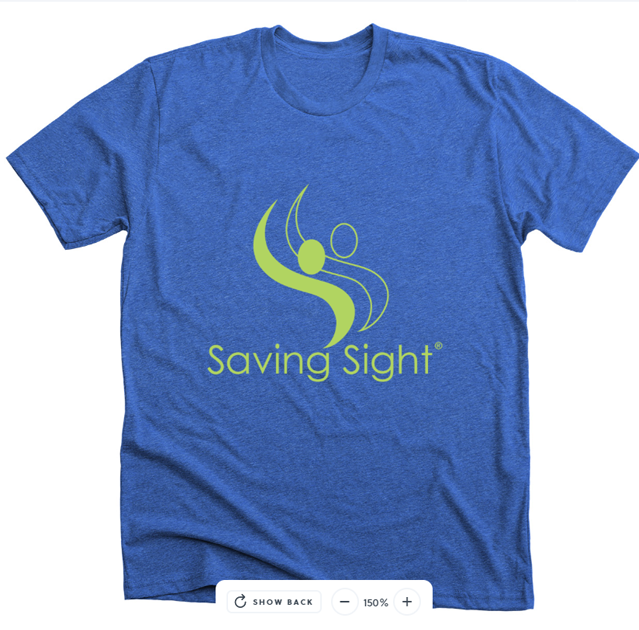
Last year, 2,559 heroes gave the gift of sight through eye donation with Saving Sight. Help us honor these donors on this year’s Donate Life Rose Parade Float.
Saving Sight has launched a t-shirt fundraiser with Bonfire, a shirt platform that works with nonprofit organizations. We will be selling three designs, available in July, August and September respectively. The proceeds from the sale of these shirts will be used to purchase roses in memory of our donors.
Each year, Donate Life’s Rose Parade float features riders representing transplant recipients; living donor walkers; and dozens of memorial “floragraph” portraits of deceased organ, eye and tissue donors. The deck of the float is also covered with thousands of dedicated roses with vials carrying personal messages of love, hope and remembrance.
To purchase a shirt, visit www.bonfire.com/store/saving-sight/. Shirts available for purchase July 1-21st, August 1-21st, and Sept 1-21st. At the conclusion of each campaign, the shirts will be shipped directly to the purchaser the last week of each month.

Saving Sight is pleased to welcome three new people to its Board of Directors for the 2019-2020 fiscal year (July 1 – June 30). Welcome Council Chair Lion Walt Hamer, Vice-Council Chair Lion George Winkeler, Jr., and Lion Al Dohmen. Immediate Past Vice-Council Chair Lion Pat Scott will continue on the board representing Lions district M-5.

CC Lion Walt Hamer

VCC Lion George Winkeler, Jr.

M-6 Lion Al Dohmen
Board members are key to the organization’s success. They actively participate in long-range planning and monitor the organization’s financial health and overall performance. As highly visible members of their communities, the board members also enhance Saving Sight’s public standing by sharing the mission, accomplishments, and goals with Lions clubs, the general public, and other partner organizations. As Lion board members, these individuals also keep their districts informed about Saving Sight.
“We are able to change more lives by saving sight due to our board members engagement, leadership, support and oversight,” said Tony Bavuso, chief executive officer.
In addition to welcoming new members to the board, Saving Sight also expressed gratitude to three individuals who retired from the board of directors on June 1, 2019. “We were honored to have Lion Allen Lohsandt, PCC Ron Campbell, and PDG Stuart Payne serve on our board,” Bavuso said. “On behalf of the staff and the recipients of our programs, I thank them for their valuable service and wish them all the best.” PCC Ron Campbell was elected to a three year term as an honorary board of director member.
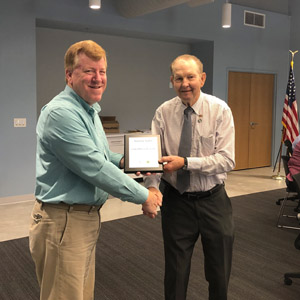
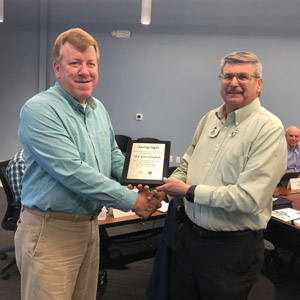
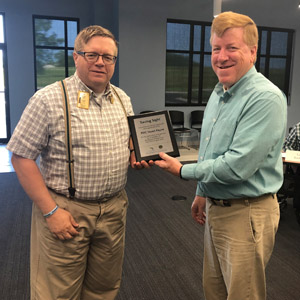
At the June Board of Directors meeting, the board elected its 2019-2020 leadership team.
These board members were elected to leadership roles for the new fiscal year:
President: Lion Pat Martchink, MD-26 M2
Vice President: IPCC Larry Boettcher, MD-26 M4
Treasurer: Lion Mike Oldelehr, MD-26 M7
Secretary: Lion Cassidy Obermark, OD, MD-26 M1
Congratulations to the leadership team. To see the full listing of Saving Sight’s board of directors, visit our Leadership Page.
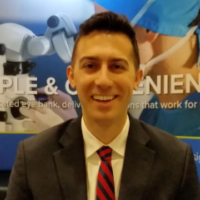
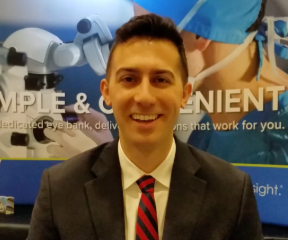
Dr. Dan Polla, ARVO 2019
Previous studies in the field of corneal transplantation have determined the importance of endothelial cell density in the health of corneal tissue grafts in terms of graft success rate. According to new research presented this week at the 2019 Annual Meeting of the Association for Research in Vision and Ophthalmology (ARVO) in Vancouver, differences in the storage media solutions can have an effect on endothelial cell density.
Through the study, a retrospective analysis was conducted on a donor database from the Kansas City-based nonprofit Saving Sight to compare eye bank donor corneal endothelial cell density (ECD) after storage in Optisol GS and Life4°C solutions. The data analyzed included 24,581 donated eye bank corneas from 2011 through 2017 stored in Optisol GS or Life4°C solutions.
This project was led by Daniel Polla, MD, Ophthalmology Resident at Montefiore Medical Center and the Albert Einstein College of Medicine Department of Ophthalmology and Visual Sciences, in collaboration with Saving Sight.
“My project looks at the different storage media solutions that donor corneas were stored in from 2011 to 2017 at Saving Sight. The preliminary findings demonstrate a small difference in endothelial cell density after storage in Optisol GS or Life4°C, with a higher ECD after storage in Optisol GS. The differences found between donor corneas in each of the storage media groups may be due to factors that were not accounted for over time such as changes in processing protocols, equipment used to measure ECD, and variability in specular microscopy. While it is possible that Optisol GS better preserves the endothelium, one potential cause for the small difference in ECD between groups is variation in endothelial cell visualization during specular microscopy due to differences in solution color,” said Dr. Polla.
“This research is important to the field of ophthalmology and corneal transplantation because it may influence the way that corneas are stored and/or evaluated prior to transplantation, ultimately leading to better graft success rates and outcomes for patients.” Dr. Polla added.
Saving Sight Chief Business Development Officer Patrick Gore, RN, CEBT, Director of Business Development Lynn Forest-Smith, and Chief Operating Officer Tina Livesay were co-authors on the study. As an eye bank that facilitates eye donation for transplant and research, the Saving Sight team is proud to support this project and to work in collaboration with Montefiore and Drs. Polla, Rand and Chuck.
“We collect a large amount of data on all of our donor cases and corneas as a part of normal operations. This was a great opportunity to have these data parameters analyzed collectively for this study. As an eye bank, this allows us to help researchers advance the field of corneal transplantation to help honor the gift of sight through better recipient outcomes,” said Tina Livesay, Saving Sight Chief Operating Officer.
This study highlights the importance of collaboration between eye banks, medical centers and researchers in advancing the fields of corneal transplantation and ophthalmology.
Abstract:
An analysis of donor corneas stored in Optisol GS and Life4°C solutions
Authors: Daniel J. Polla MD, Gabriel M. Rand MD, Patrick K. Gore RN CEBT, Lynn Forest-Smith CEBT, Tina Livesay CEBT, Roy S. Chuck MD PhD
Dan Polla, MD, Ophthalmology resident at Montefiore Medical Center, details his latest research study with Saving Sight that he will present at ARVO 2019.
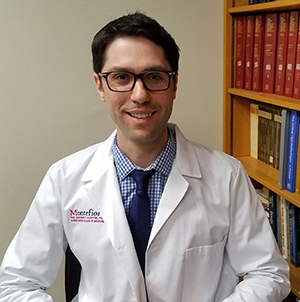
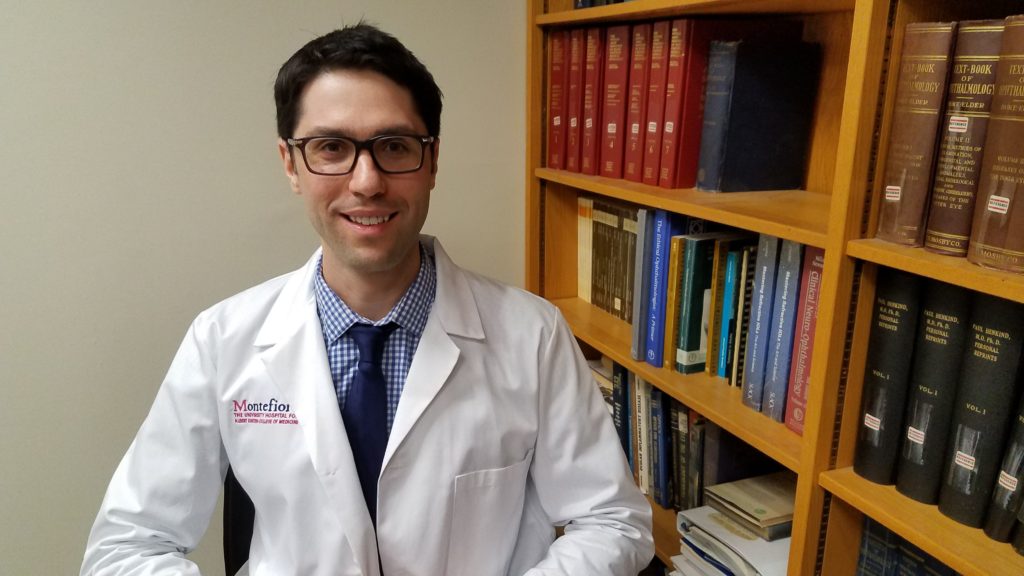
Dr. Gabriel Rand – ARVO 2019
According to new research presented this week at the 2019 Annual Meeting of the Association for Research in Vision and Ophthalmology (ARVO) in Vancouver, several potential risk factors, including donor diabetes mellitus, can lead to damage during Descemet Membrane Endothelial Keratoplasty processing.
There are limited studies identifying risk factors for damage when processing Descemet Membrane Endothelial Keratoplasty (DMEK), which has a high processing failure rate as compared to Descemet Stripping Automated Endothelial Keratoplasty (DSAEK). Through a study with lead researcher Gabriel Rand, MD, second year ophthalmology resident at Montefiore Medical Center and the Albert Einstein College of Medicine Department of Ophthalmology and Visual Sciences and Saving Sight, an analysis of potential risk factors was performed. Collaborative research partner, Saving Sight performs a high volume of DMEK processing.
Through the study, a retrospective analysis was completed with logistic regressions on all 385 DMEK tissues processed from 319 eligible donors at Saving Sight from July 2014 to June 2017. The study concluded that eye bank DMEK processing has significant rates of damage and risk factors for processing failure including donor diabetes mellitus, individual technician ability and the technician learning curve.
“Myself, Dr. Chuck and a bunch of us here at Montefiore have been working with Saving Sight to prepare an abstract for ARVO this year,” said Dr. Rand. “The topic of the abstract is the effect that donor diabetes status has on the corneal transplant quality. This is a really important subject because diabetes is a disease that is increasing in prevalence every year and it’s a multisystem disease – it affects every single part of the body, the cornea notwithstanding. There’s really not a tremendous amount of literature on what the potential influences that donor diabetes status has on these cornea transplant tissues. So what our contribution is, is to add to the fund of knowledge and to really examine does a donor diabetes status affect endothelial cell health, does it affect preparation failure rates, things like this, so it’s been a really exciting research project for us.”
Saving Sight Chief Business Development Officer Patrick Gore, RN, CEBT, Director of Business Development Lynn Forest-Smith, and Chief Operating Officer Tina Livesay were co-authors on the study. As an eye bank that facilitates eye donation for transplant and research, the Saving Sight team is proud to support this project and to work in collaboration with Montefiore and Drs. Rand and Chuck.
“It is a privilege for me to work with such a devoted team at Montefiore who want to advance the science of ophthalmology,” said Lynn Forest-Smith, Director of Business Development at Saving Sight. “I have a real passion for the work we do at Saving Sight and teaming up with these folks allows us to take our findings back to the eye banks, apply what we learn to improve our services and ultimately, help more people see.”
This collaborative study helps advance the fields of corneal transplantation and ophthalmology between eye banks, medical centers and researchers and helps identify factors that contribute to better grafts and better outcomes for patients.
Abstract:
Factors associated with eye bank descemet membrane endothelial keratoplasty processing damage
Authors: Gabriel M. Rand MD, Patrick K. Gore RN CEBT, Lynn Forest-Smith CEBT, Tina Livesay CEBT, Roy S. Chuck MD PhD
Gabriel Rand, MD, second-year Ophthalmology resident at Montefiore Medical Center, gives an overview of his recent research collaboration with Saving Sight for ARVO 2019